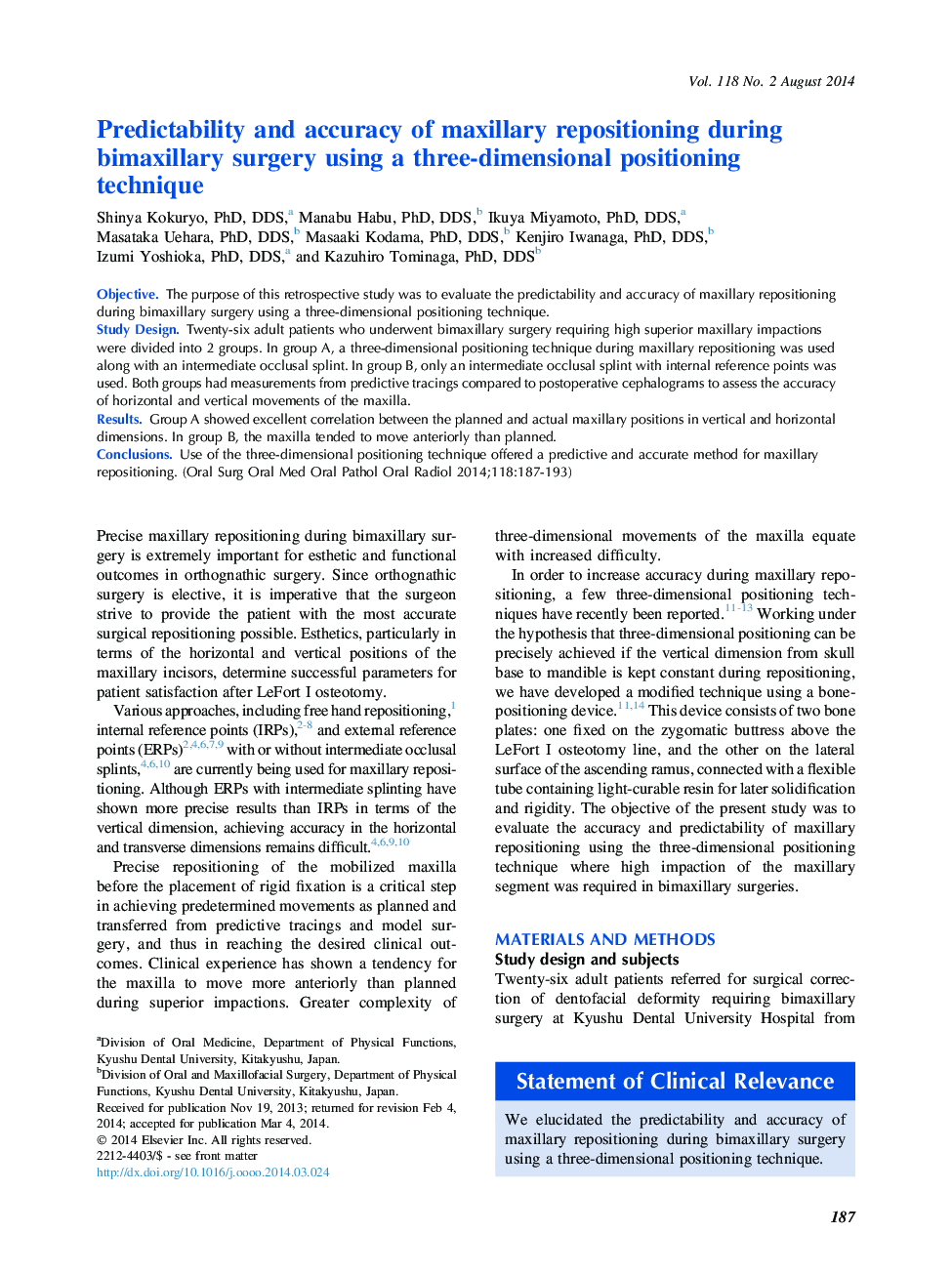| Article ID | Journal | Published Year | Pages | File Type |
|---|---|---|---|---|
| 6055823 | Oral Surgery, Oral Medicine, Oral Pathology and Oral Radiology | 2014 | 7 Pages |
ObjectiveThe purpose of this retrospective study was to evaluate the predictability and accuracy of maxillary repositioning during bimaxillary surgery using a three-dimensional positioning technique.Study DesignTwenty-six adult patients who underwent bimaxillary surgery requiring high superior maxillary impactions were divided into 2 groups. In group A, a three-dimensional positioning technique during maxillary repositioning was used along with an intermediate occlusal splint. In group B, only an intermediate occlusal splint with internal reference points was used. Both groups had measurements from predictive tracings compared to postoperative cephalograms to assess the accuracy of horizontal and vertical movements of the maxilla.ResultsGroup A showed excellent correlation between the planned and actual maxillary positions in vertical and horizontal dimensions. In group B, the maxilla tended to move anteriorly than planned.ConclusionsUse of the three-dimensional positioning technique offered a predictive and accurate method for maxillary repositioning.
